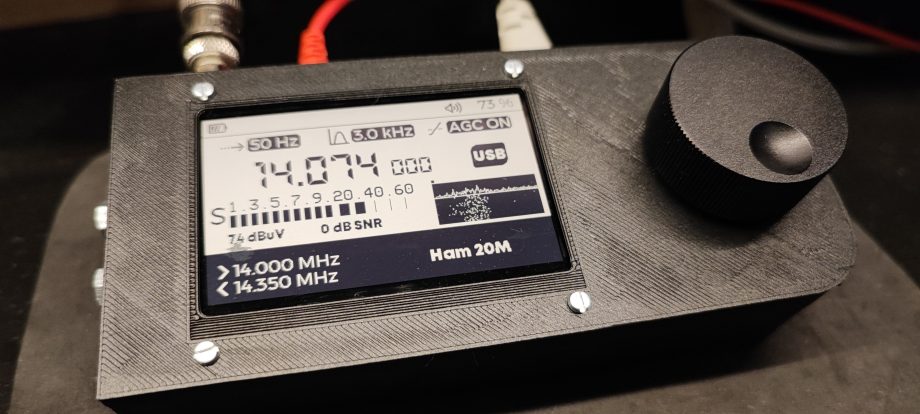Building a Compact Shortwave Radio with the SI4732 and ESP32-S2 Mini
I recently completed a DIY radio project using the SI4732 receiver module paired with an ESP32-S2 Mini, and I wanted to share a quick walkthrough of the build process. The goal was to create a compact, fully-featured HF receiver that could tune through the shortwave bands with a sleek interface.
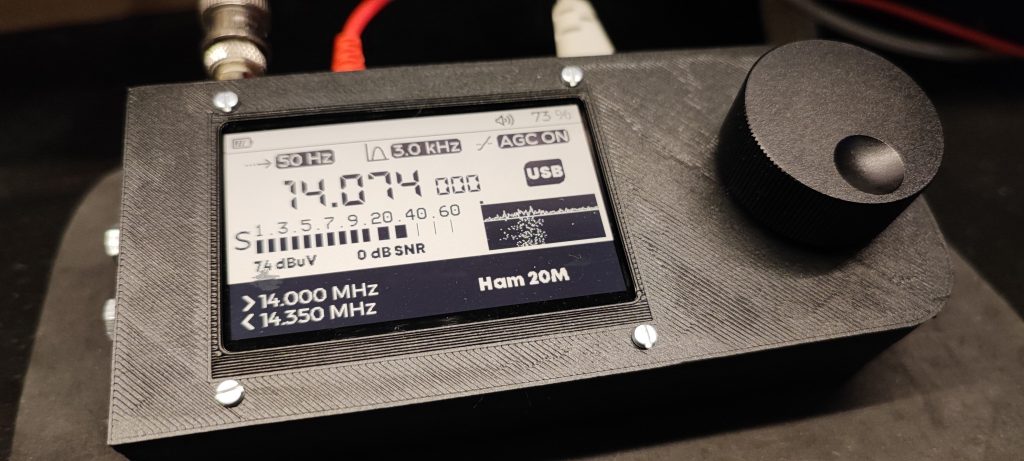
🧠 Core Components
Here’s what went into the build:
- ESP32-S2 Mini: Handles all the logic and display control. I chose the S2 variant for its USB support and lower power consumption.
- SI4732 Module: This is the heart of the radio. The SI4732 covers a wide range of frequencies (AM/FM/SW/LW) and provides digital tuning with great performance.
- 360-Degree Rotary Encoder: Used for frequency tuning. Pressing the encoder also handles mode switching.
- Sharp LS027B7DH01 LCD: A beautiful 2.7″ memory-in-pixel display (400×240) that offers excellent contrast and low power usage — perfect for portable radio use.
🔧 Inside the Box
The internals are housed in a 3D-printed enclosure. The ESP32-S2 is wired to a small perfboard with logic-level interfacing to the SI4732 and the rotary encoder. I also included level shifting and filtering as needed, given the LCD and radio module’s voltage requirements.
The wiring may look a bit wild, but it’s all neatly soldered and tested — each twisted pair minimizes noise and crosstalk, which is especially important when working with RF and display signals in close proximity.
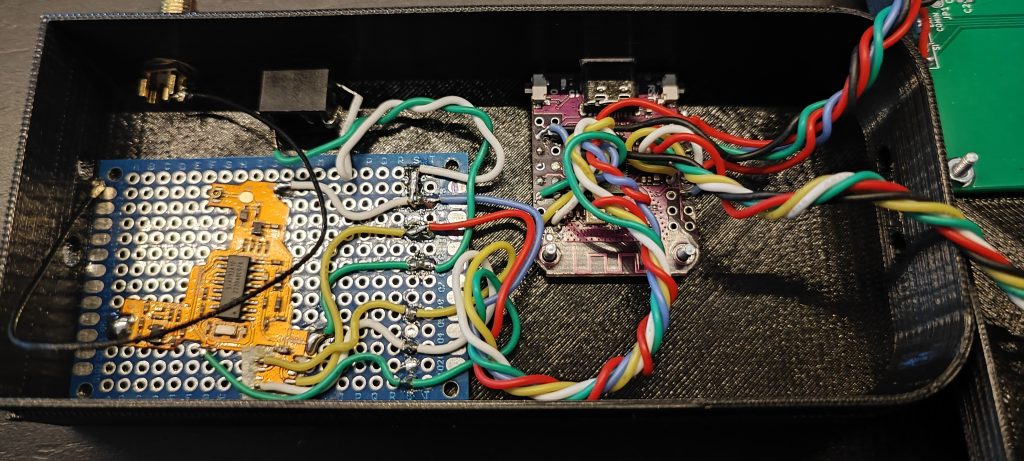
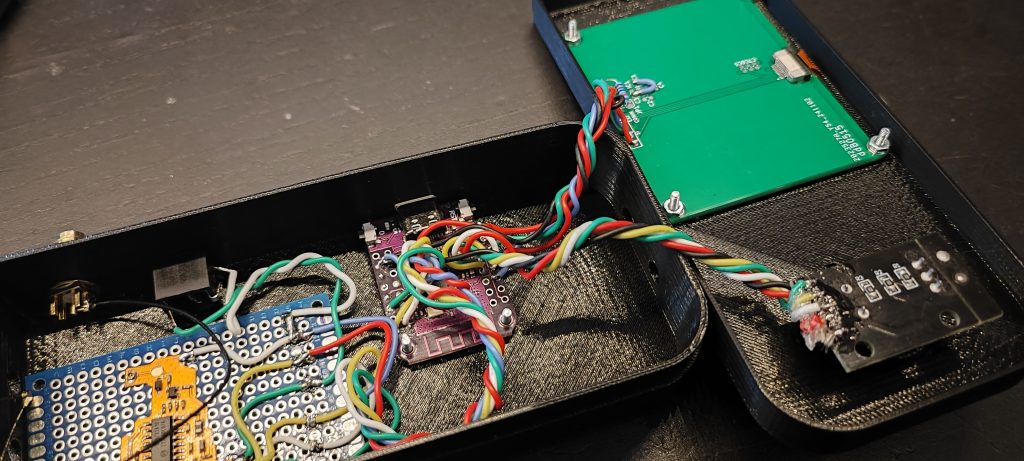
📻 The User Interface
The front of the device features the LS027B7DH01 LCD. The display shows real-time frequency, modulation mode, signal strength, SNR, bandwidth, and more. There’s also a spectrum waterfall to visualize signal activity.
- Tuning is smooth thanks to the rotary encoder.
- Pressing the encoder switches modulation (USB, LSB, AM, FM).
- Band info and S-meter readings are clear even in daylight, thanks to the Sharp display’s excellent readability.
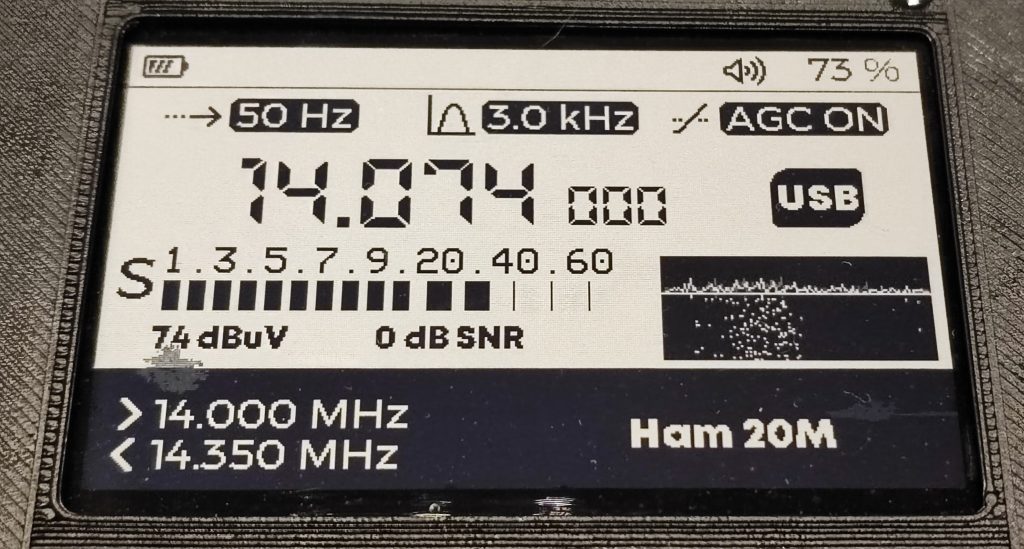
💾 Source Code
You can find the full source code and documentation for this project on GitHub:
👉 https://github.com/joaquimorg/si4732-radio
👉 3D Case
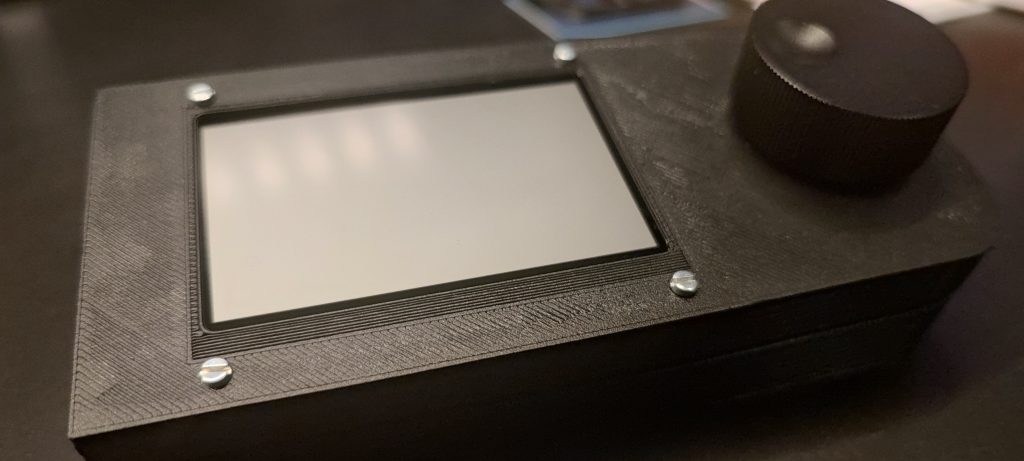

📡 Listening to FT8 Ham Radio
One of the coolest applications of this receiver is decoding FT8, a popular digital mode used by amateur radio operators for weak-signal communication. Despite using just a simple wire antenna, I was able to receive signals from all over the world.
By routing the audio output from the radio into my computer running WSJT-X or JTDX, I can decode FT8 transmissions and visualize them in real time. Here’s a screenshot from a recent session:
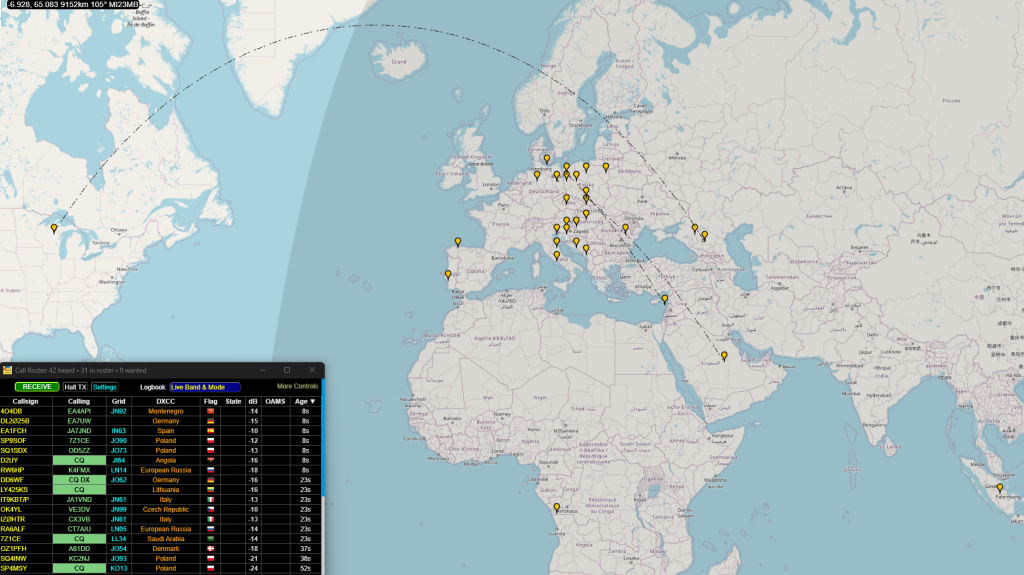
Each yellow pin on the map represents a station I received — from Europe and the Middle East all the way to Indonesia. The call roster in the window shows real-time signal reports and distances.
This setup turns the radio into a powerful tool for HF band exploration, propagation monitoring, and DX chasing, all with compact hardware and minimal power consumption.







